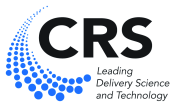Abstract
This chapter provides an introduction to the physical phenomena, which can be involved in the control of drug release from swellable delivery systems, namely, water diffusion, polymer chain relaxation, drug dissolution and diffusion, as well as polymer dissolution. Emphasis is placed on a mechanistic understanding of the occurring mass transport processes and on physically realistic mathematical theories. Several practical examples are given, illustrating the key properties of swelling-controlled drug delivery systems.
Access this chapter
Tax calculation will be finalised at checkout
Purchases are for personal use only
Similar content being viewed by others
References
Colombo P, Santi P, Siepmann J, Colombo G, Sonvico F, Rossi A, Strusi OL (2008) Swellable and rigid matrices: controlled release matrices with cellulose ethers. In: Augsburger LL, Hoag SW (eds) Pharmaceutical dosage forms: tablets, vol 2: rational design and formulation, 3rd edn. Informa Healthcare, New York
Chirico S, Dalmoro A, Lamberti G, Russo G, Titomanlio G (2007) Analysis and modeling of swelling and erosion behavior for pure HPMC tablet. J Control Rel 122:181–188
Viridén A, Larsson A, Wittgren B (2010) The effect of substitution pattern of HPMC on polymer release from matrix tablets. Int J Pharm 389:147–156
Williams HD, Ward R, Culy A, Hardy IJ, Melia CD (2010) Designing HPMC matrices with improved resistance to dissolved sugar. Int J Pharm 401:51–59
Escudero JJ, Ferrero C, Jimenez-Castellanos MR (2010) Compaction properties, drug release kinetics and fronts movement studies from matrices combining mixtures of swellable and inert polymers. II. Effect of HPMC with different degrees of methoxy/hydroxypropyl substitution. Int J Pharm 387:56–64
Baker RW, Lonsdale HK (1974) Controlled release: mechanisms and rates. In: Tanquary AC, Lacey RE (eds) Controlled release of biologically active agents. Plenum Press, New York
Korsmeyer RW, Peppas NA (1984) Solute and penetrant diffusion in swellable polymers. III. Drug release from glassy poly5HEMA-co-NVP copolymers. J Control Rel 1:89–98
Siepmann J, Peppas NA (2001) Modeling of drug release from delivery systems based on hydroxypropyl methylcellulose (HPMC). Adv Drug Deliv Rev 48:139–157
Noyes AA, Whitney WR (1897) Über die Auflösungsgeschwindigkeit von festen Stoffen in ihren eigenen Lösungen. Z Phys Chem 23:689–692
Colombo P, Bettini R, Peppas NA (1999) Observation of swelling process and diffusion front position during swelling in hydroxypropyl methyl cellulose (HPMC) matrices containing a soluble drug. J Control Rel 61:83–91
Siepmann J, Siepmann F (2008) Mathematical modeling of drug delivery. Int J Pharm 364:328–343
Kaunisto E, Marucci M, Borgquist P, Axelsson A (2011) Mechanistic modelling of drug release from polymer-coated and swelling and dissolving polymer matrix systems. Int J Pharm 418:54–77
Peppas NA, Gurny R, Doelker E, Buri P (1980) Modelling of drug diffusion through swellable polymeric systems. J Membr Sci 7:241–253
Siepmann J, Podual K, Sriwongjanya M, Peppas NA, Bodmeier R (1999) A new model describing the swelling and drug release kinetics from hydroxypropyl methylcellulose tablets. J Pharm Sci 88:65–72
Siepmann J, Kranz H, Bodmeier R, Peppas NA (1999) HPMC-matrices for controlled drug delivery: a new model combining diffusion, swelling and dissolution mechanisms and predicting the release kinetics. Pharm Res 16:1748–1756
Siepmann J, Kranz H, Peppas NA, Bodmeier R (2000) Calculation of the required size and shape of hydroxypropyl methylcellulose matrices to achieve desired drug release profiles. Int J Pharm 201:151–164
Siepmann J, Peppas NA (2000) Hydrophilic matrices for controlled drug delivery: an improved mathematical model to predict the resulting drug release kinetics (the “Sequential Layer” model). Pharm Res 17:1290–1298
Crank J (1975) The mathematics of diffusion. Clarendon Press, Oxford
De Gennes PG (1971) Reptation of a polymer chain in the presence of fixed obstacles. J Chem Phys 55:572–579
Ju RTC, Nixon PR, Patel MV (1995) Drug release from hydrophilic matrices. 1. New scaling laws for predicting polymer and drug release based on the polymer disentanglement concentration and the diffusion layer. J Pharm Sci 84:1455–1463
Ju RTC, Nixon PR, Patel MV, Tong DM (1995) Drug release from hydrophilic matrices. 2. A mathematical model based on the polymer disentanglement concentration and the diffusion layer. J Pharm Sci 84:1464–1477
Ju RTC, Nixon PR, Patel MV (1975) Diffusion coefficients of polymer chains in the diffusion layer adjacent to a swollen hydrophilic matrix. J Pharm Sci 86:1293–1298
Fujita H (1961) Diffusion in polymer-diluent systems. Fortschr Hochpolym Forsch 3:1–47
Narasimhan B, Peppas NA (1996) Disentanglement and reptation during dissolution of rubbery polymers. J Polym Sci Polym Phys 34:947–961
Narasimhan B, Peppas NA (1996) On the importance of chain reptation in models of dissolution of glassy polymers. Macromolecules 29:3283–3291
Narasimhan B, Peppas NA (1997) Molecular analysis of drug delivery systems controlled by dissolution of the polymer carrier. J Pharm Sci 86:297–304
Siepmann J, Streubel A, Peppas NA (2002) Understanding and predicting drug delivery from hydrophilic matrix tablets using the “sequential layer” model. Pharm Res 19:306–314
Author information
Authors and Affiliations
Corresponding author
Editor information
Editors and Affiliations
Rights and permissions
Copyright information
© 2012 Springer US
About this chapter
Cite this chapter
Siepmann, J., Siepmann, F. (2012). Swelling Controlled Drug Delivery Systems. In: Siepmann, J., Siegel, R., Rathbone, M. (eds) Fundamentals and Applications of Controlled Release Drug Delivery. Advances in Delivery Science and Technology. Springer, Boston, MA. https://doi.org/10.1007/978-1-4614-0881-9_7
Download citation
DOI: https://doi.org/10.1007/978-1-4614-0881-9_7
Published:
Publisher Name: Springer, Boston, MA
Print ISBN: 978-1-4614-0880-2
Online ISBN: 978-1-4614-0881-9
eBook Packages: Biomedical and Life SciencesBiomedical and Life Sciences (R0)





